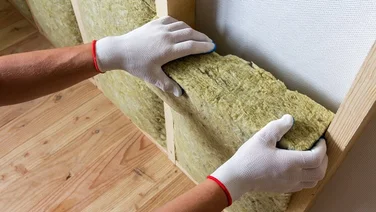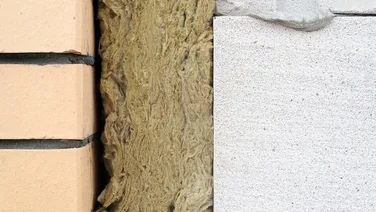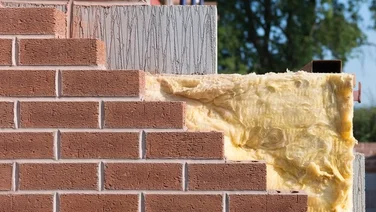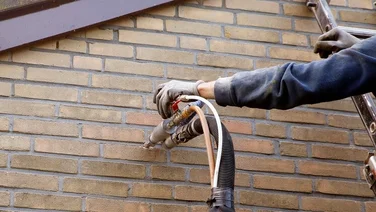- Floor insulation can cost between £7.00-£10.50 per square meter
- There are different types of insulating materials to choose from
- You might be able to get floor insulation on the ECO4 scheme
Floor insulation is a critical but often overlooked component of home energy efficiency. Proper insulation can significantly lower heating costs and enhance comfort in your living space by reducing heat loss through the floors.
Different types of floor insulation are available, each with benefits and costs. Understanding these options can help homeowners make informed decisions about the best way to insulate their floors and maximise energy savings.
This article will explore the different methods of floor insulation, including their installation processes and associated costs. Whether considering a DIY project or hiring a professional, we’ll cover everything you need to know to get started.
Investing in floor insulation is a one-time cost that can pay off in the long run through reduced energy bills and increased home comfort. According to the Energy Saving Trust, insulating the ground floor can save the average property around £60 a year in energy bills, or £100 if you live in a detached house.
If you’re interested in insulation, whether it’s your floors, walls, or roof, fill out our form. You’ll be given free estimates for the cost of your insulation.
Get free insulation quotes
Answer a few quick questions, and our trusted installers will send you bespoke insulation quotes – for free.

What is floor insulation?
Just as you can insulate your roof or walls, you can also add insulation to the floors of your home. This can be applied to solid or suspended floors and can save you money on your energy bills.
Floor insulation is usually only needed on the ground floor.
An uninsulated floor can result in losing 10% to 20% of heat from your home.
If you have a suspended floor, you may also be losing heat from draughts from under the floor. You’ll know which is which by the sound of the floor when you walk on it.
If the floor is carpeted and creaky or bouncy, or if you can see the floorboards, chances are the floor is suspended. If not, or if your home was built after around 1950, chances are the ground floors are solid.
How does floor insulation work?
Just like wall or roof insulation, floor insulation adds layers of materials to reduce the amount of heat that can escape from your floor to the ground or outside air. You can liken it to how a Thermos flask keeps your tea hot for a longer time than a regular cup.
Suspended floors are typically insulated under the floorboards between the rafters. This is relatively straightforward, but you should get a professional to do the work for the best results.
Solid floors, however, are a very different animal. They can either be insulated by adding a layer of insulation on top of existing floors (after some preparation works) or require substantial building works to excavate and rebuild them with new insulation and concrete.
This type of insulation requires professional experience, and it is not recommended that you attempt it yourself.
What types of floor insulation are there?
If you just want to cut down on draughts, you can go the easy route and simply close the gaps with sealant or tape. That’s not really insulation, though. The main types of floor insulation are:
- Insulation boards/EPS sheets: These solid, sturdy boards are one of the most common and effective methods for flooring insulation. They are great at retaining heat, crack-resistant, and waterproof, and they are generally considered the best option for most situations.
- Spray foam insulation: Spray polyurethane foam. There are problems with spray foam insulation, although many of the concerns relate to its use as roof insulation rather than for floors.
- Insulating screed: This cement-like substance is typically used alongside other insulation methods. It fills in gaps and holes in pre-laid insulation, preventing heat from escaping.
- Cork, wood, or cellulose: These plant-based materials add an extra layer of insulation but are not the most efficient at retaining heat. They are cost-effective and environmentally-friendly options that can supplement other insulation methods.
For more detail on these and other options, and to help you make the best choice, check out our page on The 8 Best Floor Insulation Options for Your Home.

How much does floor insulation cost?
The cost of insulating your floors depends on the type of construction, as well as the material you choose.
For suspended timber floors, this typically involves adding insulation material between the joists that hold up the floorboards.
Mineral wool is a common choice for suspended floors. If you go for slabs about 140mm thick, this costs around £14.20 per square metre (before tax).
For solid floors, a 50mm thick insulation board will cost around £8.90 per square metre (before tax).
If you have a suspended floor, you will likely need to remove all flooring, unless you have a usable crawl space. Obviously, lifting the flooring will increase costs if you’re paying someone to do it. You could do it yourself, although if you break any floorboards this will mean extra costs.
According to the Energy Saving Trust, getting professionally-installed suspended floor insulation can cost around £4,700, depending on the materials used and the floor area to be insulated. Solid floor insulation could cost considerably more.
If installing over a solid floor, you may have to raise things like skirting boards and sockets, which can be difficult, and you will need to install a vapour barrier. Labour costs for installation are likely to be around £250 a day.
Can I get a grant for floor insulation?
In some cases, you might be eligible for funding for floor insulation under the government’s ECO4 scheme. It aims to help tackle fuel poverty and reduce carbon emissions.
Generally, to be eligible you’ll need to live in a home with an energy efficiency rating of D or lower, and receive certain benefits. Local authorities can also refer people through the ECO4 Flex scheme. For this, you’ll need to be on a low income, or have a person in your household with a long-term condition that makes them more vulnerable to the cold.
The energy company is responsible for the level of funding, as well as for the projects and installers that are used. You can contact any of the suppliers covered by the scheme to do the work (provided you meet eligibility criteria are met) – it doesn’t have to be your supplier.
The scheme runs in England, Scotland and Wales, but not Northern Ireland. You can read more in our guide to grants for home insulation.
DIY vs professional insulation
You might be the kind of person who wants full control of what happens to their home. In that case, you’ll want to know the implications of DIY insulation installation when compared to a professional installer’s services.
The obvious benefit is that you’ll only have to pay for the materials and tools needed to do the job. However, this can be a false economy. In most cases, especially when it comes to major building works (like insulating solid floors), getting a professional to do the work is better.
They’ll have all the tools needed, know what they are doing, and, crucially, should be insured if something goes wrong.
However, hiring a professional will come with a premium over doing the job yourself.
Summary and next steps
- Floor insulation is crucial for retaining heat in your home, reducing energy costs, and preventing up to 10-20% of heat loss.
- Insulating materials include insulation boards (EPS sheets), polyurethane spray, insulating screed, and natural materials like cork, wood or cellulose, each with different costs and effectiveness.
- Suspended floors are typically insulated under the floorboards, while solid floors may require insulation on top of the existing surface, or involve more extensive work to add insulation during reconstruction.
- Costs vary depending on the type of insulation and floor. Solid floor insulation is more expensive and should only be attempted by professionals. Suspended floors are cheaper to insulate, although still not a simple task.
- While DIY insulation can save money on labour costs, it requires skill and knowledge to avoid damaging the house. Professional installation ensures safety and effectiveness but comes with additional costs.
It takes just a couple of minutes to fill out our form. You’ll receive free quotes for insulation installation, allowing you to take the first step toward a cheaper and warmer home.








